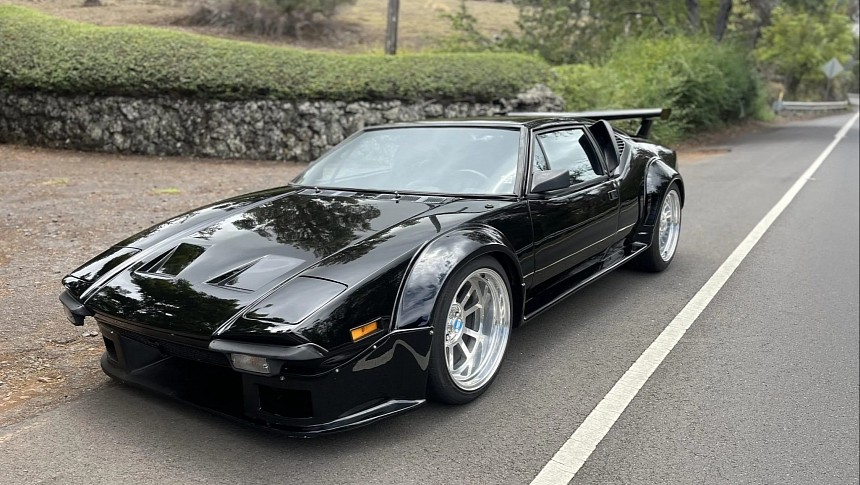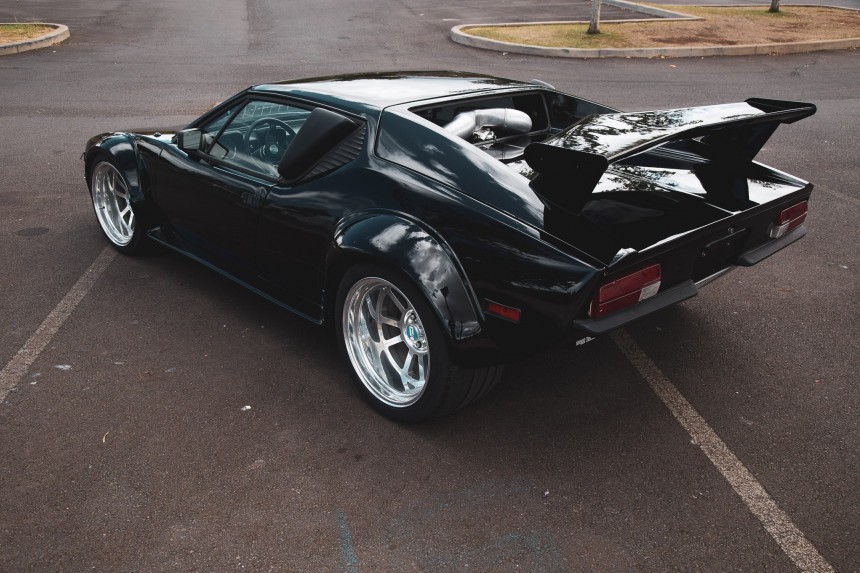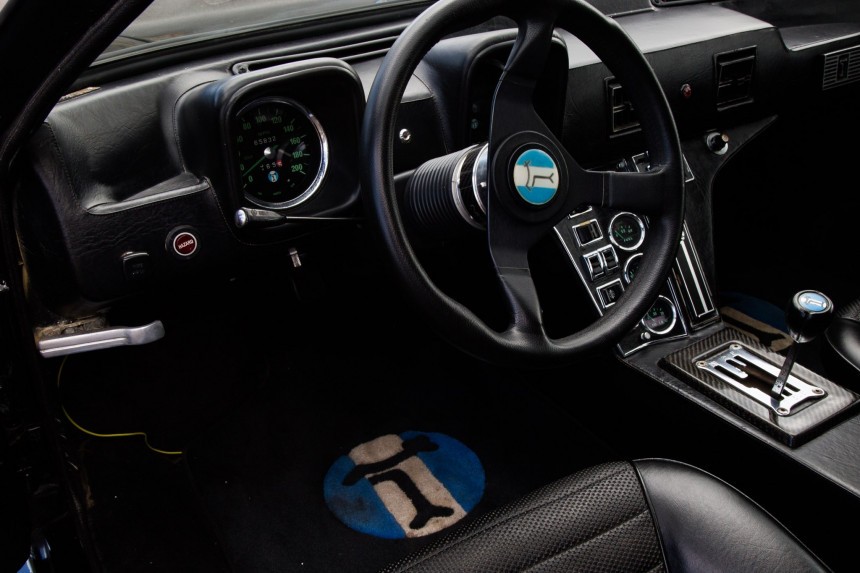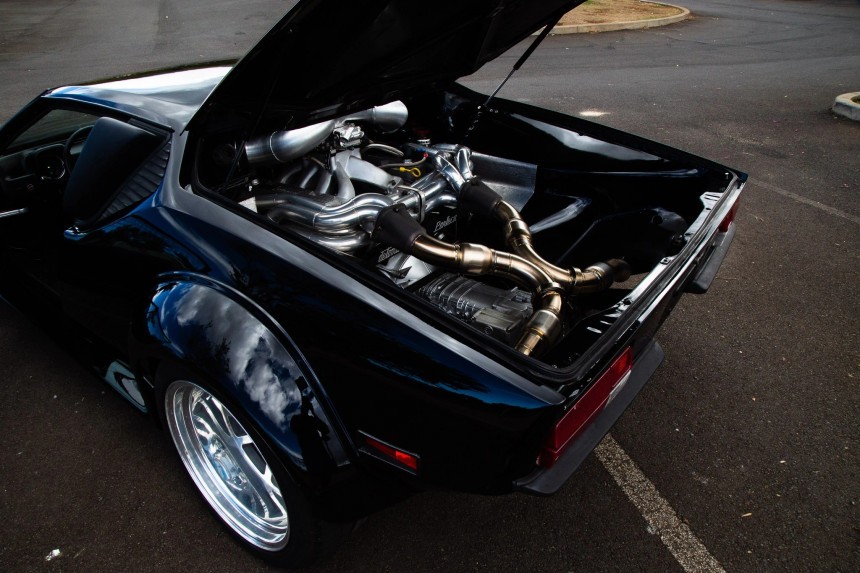I dare you to find something cooler than an Italian supercar powered by American V8 muscle. This combination of styling and raw power is what rock and roll would look like if it were a car. I am, of course, talking about the DeTomaso Pantera. It is absolutely amazing in its insanity, so let's dive deeper.
The Pantera story begins with one Argentinian named Alejandro de Tomaso. In 1955, he fled to Italy from his home country because he was one of several trying to overthrow the Argentinian government. When he arrived in Italy, de Tomaso settled in Modena, where he started his career as a race car driver for Maserati.
In 1959, he and his wife started the DeTomaso Automobili company with the intention of building Formula 1 cars. Sadly, that didn't work out, but he never gave up on building his own cars, so he switched over to high-end sports cars.
The first car to result from this new philosophy was the Vallelunga, a mid-engined sports car powered by a 104 hp (105 ps) inline-four shared with the Ford Cortina. The body was designed and built by Fissore at the beginning, but it was later handed over to Ghia to continue production. Only 60 Valellungas were made until 1966, when the brand-new Mangusta was introduced.
The Mangusta brought a few changes to the table, with a more grand-tourer design and the switch from European Ford engines to American ones. That means a 4.7-liter (289 ci) V8 one, to be precise. The bodywork continued to be made under Ghia's roof, and the Mangusta was starting to pick up and sell a little more than the Vallelunga - around 400 Mangustas were made, to be exact.
The Mangusta name ended in 1971, when one of the best cars ever made was born, called the Pantera. Now, to understand why the Pantera is so good, we have one from 1972 here to bless our existence, so let's take a look.
The Pantera was sold through Lincoln and Mercury dealerships in the States after Lee Iaccoca convinced Hank the Deuce to invest in the company. But that partnership was short lived, because, in 1973, the oil crisis and emission regulations hit, so the Pantera was pulled out of dealerships in the U.S.
The body was designed by Tom Tjaarda, who worked at Ghia and is responsible for cars like the Mercedes 230SL Pagoda and the Ferrari 365 California. Now, you might notice that this particular Pantera doesn't look standard. That is so because this one has been modified, with a GT5-style body kit, among other goodies which we'll get to shortly.
This body kit consists of fiberglass fender flares, a front air dam, side skirts, and a rear wing added to the wedge-shaped stock body. Complementing the race car look is a pair of intakes fitted in place of the rear quarter windows that feed air to the mid-mounted engine. This new and improved body was repainted black, and to top things off, it has a set of 18-inch polished wheels that measure 335 millimeters wide in the rear.
Behind those big-boy wheels you'll find more fun components that were changed. The suspension setup features adjustable coilovers, and slowing it down is the responsibility of the four-piston calipers that sit over vented rotors.
The black theme from the body carries over to the inside. The bucket seats are upholstered in black vinyl, and it has a matching dashboard, center console, and door panels. The audio system was also upgraded, and a carbon-fiber bezel was fitted around the gated shifter - a modification which is, let's say, questionable.
The Momo steering wheel sits in front of Veglia instrumentation, which includes a tachometer and a 200 mph (320 kph) speedometer, which hints at the grunt that hides under this car's hood, so let's take a closer look at the power unit.
Since the first DeTomaso model, all of the power plants came from Ford, and this one is no different. Behind the driver, you'll find a 351 ci (5.8-liter) Cleveland V8. Initially, power was rated at 310 hp (314 ps), but this particular car has a replacement engine that came from Robert Yates Racing Engines, it has a Holley carb, aluminum heads, custom intake, and the most beautiful custom exhaust system I have ever seen so that power output might be higher, but a certain figure wasn’t disclosed. All of that oomph is sent to the rear wheels via a ZF five-speed manual transmission that was recently rebuilt.
After the Pantera, DeTomaso started to decline and faced significant financial difficulties. But, nowadays, it's starting to get back on its feet and once again build the crazy, flamboyant cars of the past, and that's a good thing.
If you fancy yourself a really rowdy car, this particular Pantera is up at auction in Makawao, Hawaii, and it currently sits at 100,000 dollars. The five-digit odometer shows 66,000 miles (106,000 kilometers), but the total mileage is unknown. It also comes with a clean Hawaii title and a burning desire to make a whole lot of noise.
In 1959, he and his wife started the DeTomaso Automobili company with the intention of building Formula 1 cars. Sadly, that didn't work out, but he never gave up on building his own cars, so he switched over to high-end sports cars.
The first car to result from this new philosophy was the Vallelunga, a mid-engined sports car powered by a 104 hp (105 ps) inline-four shared with the Ford Cortina. The body was designed and built by Fissore at the beginning, but it was later handed over to Ghia to continue production. Only 60 Valellungas were made until 1966, when the brand-new Mangusta was introduced.
The Mangusta name ended in 1971, when one of the best cars ever made was born, called the Pantera. Now, to understand why the Pantera is so good, we have one from 1972 here to bless our existence, so let's take a look.
The Pantera was sold through Lincoln and Mercury dealerships in the States after Lee Iaccoca convinced Hank the Deuce to invest in the company. But that partnership was short lived, because, in 1973, the oil crisis and emission regulations hit, so the Pantera was pulled out of dealerships in the U.S.
The body was designed by Tom Tjaarda, who worked at Ghia and is responsible for cars like the Mercedes 230SL Pagoda and the Ferrari 365 California. Now, you might notice that this particular Pantera doesn't look standard. That is so because this one has been modified, with a GT5-style body kit, among other goodies which we'll get to shortly.
Behind those big-boy wheels you'll find more fun components that were changed. The suspension setup features adjustable coilovers, and slowing it down is the responsibility of the four-piston calipers that sit over vented rotors.
The black theme from the body carries over to the inside. The bucket seats are upholstered in black vinyl, and it has a matching dashboard, center console, and door panels. The audio system was also upgraded, and a carbon-fiber bezel was fitted around the gated shifter - a modification which is, let's say, questionable.
The Momo steering wheel sits in front of Veglia instrumentation, which includes a tachometer and a 200 mph (320 kph) speedometer, which hints at the grunt that hides under this car's hood, so let's take a closer look at the power unit.
After the Pantera, DeTomaso started to decline and faced significant financial difficulties. But, nowadays, it's starting to get back on its feet and once again build the crazy, flamboyant cars of the past, and that's a good thing.
If you fancy yourself a really rowdy car, this particular Pantera is up at auction in Makawao, Hawaii, and it currently sits at 100,000 dollars. The five-digit odometer shows 66,000 miles (106,000 kilometers), but the total mileage is unknown. It also comes with a clean Hawaii title and a burning desire to make a whole lot of noise.













